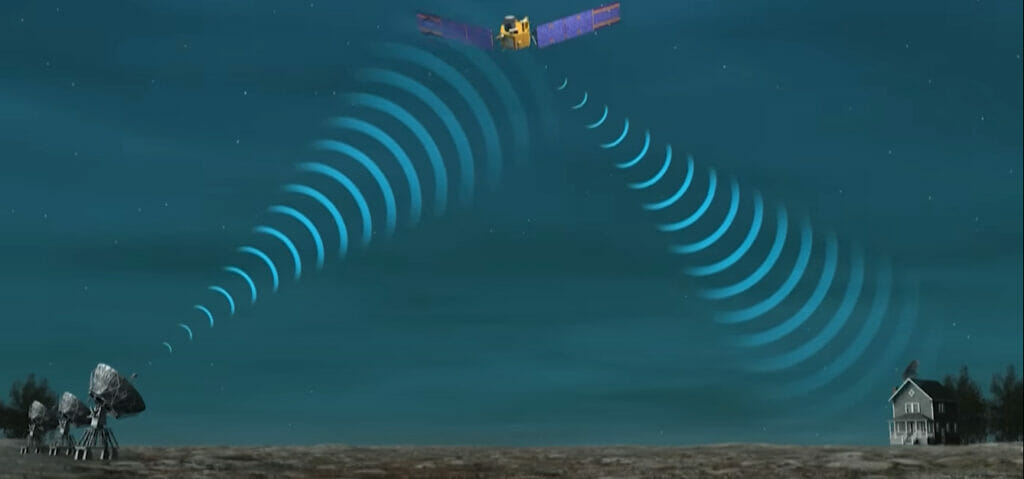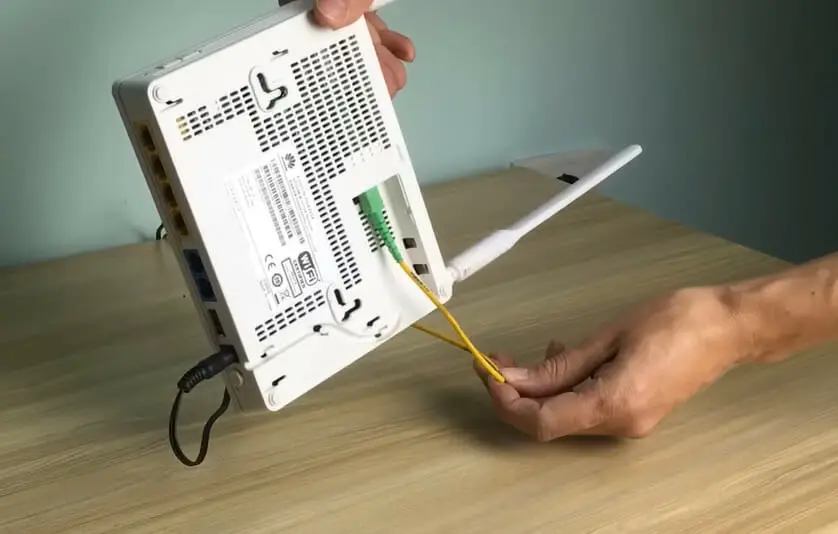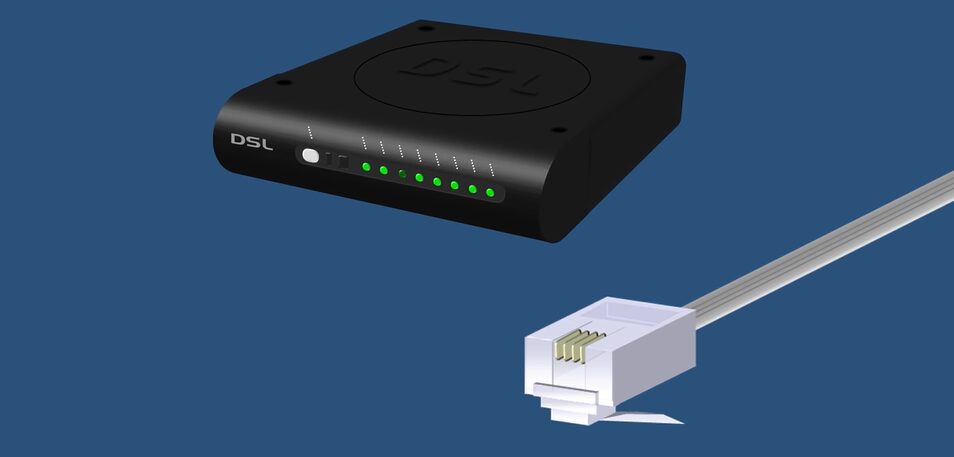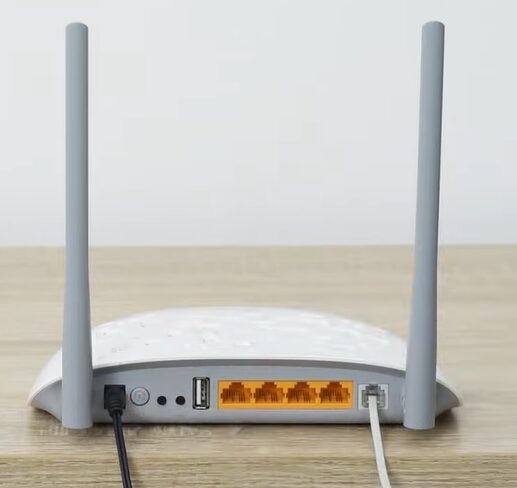In today’s hyper-connected world, the type of internet service you choose can make a big difference in your online experience whether it’s streaming, gaming, or just browsing, the speed and reliability of your connection matter.
You might be wondering which one is the best fit for you. Well, stick around as I dive deeper into these options.
We’ll examine how they work, their pros and cons, and what makes each unique.
Summary of Satellite Internet, Fiber, DSL
Dive in with me as we break down the essentials of Satellite Internet, Fiber, and DSL.
We’ll highlight their key features and pinpoint exactly where each shines, ensuring you have a clear roadmap when making your next internet decision.
| Type | Pros | Cons | Average Speeds | Average Monthly Costs (as of 2022) |
|---|---|---|---|---|
| Fiber Optic Internet | High Speeds; Reliable Connection | Limited Availability | 250 Mbps to 1 Gbps | $60 to $100+ |
| DSL | Widely Available; Affordable Price | Slower than Fiber | 5 Mbps to 35 Mbps | $25 to $50 |
| Satellite Internet | Available almost everywhere | Affected by Weather; Typically slower than terrestrial connections | 12 Mbps to 100 Mbps | $30 to $150 |
Some Notes:
- Fiber Optic Internet: This is the fastest internet connection available for residential use. It uses thin strands of glass or plastic to transmit data as light signals. It’s not universally available because it requires the installation of new infrastructure.
- DSL (Digital Subscriber Line): This internet connection uses existing telephone lines to transmit digital data. Its speed is generally slower than fiber but can be sufficient for basic browsing and streaming.
- Satellite Internet: As the name suggests, it uses satellites to beam internet data to a dish installed at the user’s location. It’s often the only option in remote or rural areas. Its speed and reliability can be affected by weather conditions.
While average costs and speeds are provided, the actual cost and speed a consumer might experience can vary widely with location, the specific provider, and the chosen plan.
Always consult with local providers for the most up-to-date information.
Satellite Internet

Let’s dive into the cosmos of internet connectivity and talk about satellite internet.
So what’s the deal with satellite internet? It sends signals from your device to a satellite orbiting thousands of miles above the Earth. That signal then bounces back to an earth-based station, which sends it through the web. Sounds like something out of Star Trek.
Pros
Hey, everything has its upsides! Satellite internet is no exception. It’s got some pretty cool perks that make it stand out amongst other types:
- Universal Availability: Whether you’re chilling in downtown Manhattan or posted up in rural Montana – if you’ve got clear skies overhead and a view of the southern sky, you’ve got potential access to satellite internet.
- Decent Speeds: No more waiting around for pages to load! While it might not beat fiber optic speeds yet, most providers offer speeds to help keep buffering at bay.
- Quick Installation: A qualified technician can usually have you set up within a couple of hours.
Cons
But let’s be real – nothing’s perfect. Satellite internet has its fair share of drawbacks, too.
- Latency Issues: Space travel is cool but time-consuming! The time taken for data to travel from your house to outer space causes latency issues.
- Weather Dependent: Storm clouds on the horizon? That might mean disrupted service, as bad weather can obstruct satellite signals.
- Data Caps: Most providers cap how much data you can use monthly.
Typical Users
- Satellite internet is usually the go-to choice for folks living in rural or remote areas where traditional cable or fiber optic services are sparse.
- It’s also handy for businesses that need to set up temporary workstations like construction sites or event organizers who need connectivity at outdoor venues.

Initial Setup
- Setting up a satellite dish is a technical task. Depending on the provider, you might find some variability in these setup charges. Remember, the quality of your installation can affect your connectivity, so it’s an essential investment.
Monthly Plans
- Just like selecting a smartphone plan, your satellite internet monthly bill will hinge on the package you pick. Whether you’re a casual browser or a streaming enthusiast, you’ll find plans ranging from $50 to $150. The faster the speed, the heftier the price.
Hidden Costs
- Keep an eye on those data caps. Be cautious if you’re a heavy user, especially with downloads or streaming. Crossing that data limit can either slow down your speeds or add extra costs to your monthly bill.
Satellite Internet Providers
Navigating the vast digital landscape, satellite internet emerges as a beacon for those in remote corners of the globe. Let’s spotlight the leading satellite internet providers, ensuring seamless connections from above.
Fiber Internet

Let’s dive right into the world of Fiber Internet. It’s one of the most sought-after types of internet service today.
It is a type of broadband connection. How does it work? Well, it uses very thin strands of glass or plastic to transmit information as light pulses. This method allows for incredibly rapid data transfer rates, surpassing what you’d get with traditional copper cables used in DSL or cable connections.
Pros
There are plenty of reasons why folks love fiber. Here are just a few:
- Speed: The biggie here is speed. With fiber, you can reach speeds up to 1 Gbps (1000 Mbps!). Say goodbye to buffering videos and slow download times.
- Reliability: Weather conditions don’t bother fiber connections like other service types. So, rain or shine, you’ll have stable internet.
- Symmetric Speeds: Upload speeds match download speeds with fiber – perfect for gamers and content creators.
Cons
Despite all these perks, there are a few downsides to consider, too:
- Availability: Put: not everyone can get fiber yet because its infrastructure isn’t everywhere.
- Cost: Fiber may be significantly pricier than other options like DSL or satellite.
Typical Users
So, who typically uses this kind of high-speed internet?
- Anyone living in an urban area with the available infrastructure might choose fiber for its speed and reliability.
- It’s also popular among heavy internet users like gamers who need low latency or businesses that rely on strong and stable connections for their operations.

Initial Setup
- Installation fees may be present, especially if new infrastructure or wiring is required for your home. Promotions or discounts may be available depending on the provider.
Monthly Plans
- Speed and efficiency come at a price. Fiber is the cream of the crop when it comes to internet connectivity. Expect monthly bills between $60 and $200, depending on how fast you want to go.
Hidden Costs
- Some providers offer the option to rent the equipment. While this may seem convenient, rental costs can increase over time. Weigh the benefits of a one-time purchase against monthly rental fees to see what’s best for your wallet.
Fiber Internet Providers
Let’s get into the fast lane of the internet world. Here’s a rundown of the notable players in the fiber game, bringing the future of connectivity straight to your doorstep.
DSL (Digital Subscriber Line) Internet

Let’s dive into what DSL, or Digital Subscriber Line, really is.
It is an internet connection that uses existing telephone lines to provide high-speed internet access. With DSL service, data travels across copper telephone lines. Now, it’s not the same as dial-up—remember those days? Unlike dial-up, you can use your phone and surf the web simultaneously!
Pros
Now let’s chat about some of the benefits of using a DSL connection:
- Widespread availability. One major plus is its availability since it uses existing phone lines.
- Consistent speeds. Unlike cable, it often offers consistent speeds because you don’t share bandwidth with neighbors.
- Reduced latency. Plus, compared to satellite internet, it tends to offer lower latency. That means less lag time between sending a request and getting a response.
Cons
But like anything else in life, there are also downsides:
- Speed Limitations. Speeds can be slower than other options, such as fiber-optic internet.
- Distance Dependency. Remember when I said distance matters? Conversely, your speed could suffer if you live far from the provider’s central office.
- Weather Impact. Weather conditions may affect signal strength at times.
Typical Users
So, who typically uses DSL?
- It might be perfect for someone living alone or small families who primarily use their connection for basics like email and web browsing.

Initial Setup
- The beauty of DSL is its use of existing phone lines. Because of this, the setup process is often straightforward. Most homes are already equipped, so there’s no significant groundwork. The primary cost you might encounter is the modem, the gateway to your online world.
Monthly Plans
- DSL is like that reliable old truck – not always the fastest, but it does the job without burning a hole in your pocket. Prices hover between $30 and $70. It’s ideal for those who need good internet without the super-speeds of fiber.
Hidden Costs
- Before signing on the dotted line, read the terms. Some DSL providers lock you into long-term contracts. If life throws a curveball and you must cut ties early, you might face cancellation fees.
DSL Internet Providers
DSL still holds its ground as a solid choice for many. Let’s zoom in on the prominent DSL internet providers who have connected homes and businesses with consistency and reliability.
Finding the Right Internet Service for You
Navigating the internet service world can be like piecing together the right tools for a project. You must consider what’s available in your area, what you need from your connection, and your budget.
- Assess Your Needs: First, how do you primarily use the internet? You’ll want a speedy and reliable connection if you’re streaming high-definition movies, online gaming, or working from home. On the other hand, if your usage is more like checking emails, browsing, and occasional streaming, you might not need the top-tier option.
- Check Availability: Before getting your heart set on a specific type of internet, check what’s available in your location. Some areas might not have the infrastructure for fiber, but they might have reliable DSL or satellite options.
- Compare Speeds: Remember, higher speed usually means a higher price tag. Look at the download and upload speeds ISPs offer. A speed range of 25-100 Mbps (megabits per second) is adequate for most households. But if multiple devices are connected simultaneously or if you have heavy-duty requirements, you might want to go for 100+ Mbps.
- Consider Data Caps: Some providers might restrict the monthly data you can use, especially with satellite internet. Choose a plan that comfortably covers your usage so you won’t face extra charges or throttled speeds.
- Read the Fine Print: Before finalizing any deal, understand the terms and conditions. Are there installation fees? Will a contract bind you? What’s the policy if you need to break that contract?
- Customer Service: We’ve all been there—facing technical glitches. Hence, it’s worth considering a provider that offers robust customer support, making those inevitable hiccups easier to handle.
- Price and Packages: Lastly, evaluate the cost. While we all love a good deal, the cheapest option isn’t always the best. Consider what’s included in the package. Maybe you’ll get a bundle with a phone or TV service that suits your lifestyle.
Frequently Asked Questions
- Can I easily switch between these services if I move?
- It depends on the availability of your new location. Always check with local providers before moving to ensure a smooth transition.
- How long does installation usually take for each type?
- Satellite requires setting up a dish, typically a few hours. Fiber and DSL might take a similar amount of time, depending on the existing infrastructure.
- Are there any health concerns with Satellite Internet?
- No. Like other communication technologies, Satellite internet operates well within international safety guidelines.
- Is Fiber Internet safe from external interferences?
- Yes, Fiber optic cables are immune to electromagnetic interference, which can be a problem for copper-based connections like DSL.
- Can I get Fiber internet in apartment buildings or condos?
- It’s possible if the entire building is wired for fiber. It’s always best to check with your property management and local ISPs.
- What kind of maintenance is needed for these internet types?
- Satellite dishes might need occasional adjustments. Fiber and DSL require minimal maintenance, but regularly checking your equipment and connections is good.
- Do these internet types support Wi-Fi connections?
- Yes, with the right equipment (like a Wi-Fi router), you can set up wireless networks with any of these services.
References
Website Resources:
- Internet Society. https://www.internetsociety.org/
- BroadbandNow. https://broadbandnow.com/
- AT&T. https://www.att.com/internet/fiber/
- CenturyLink. https://www.centurylink.com/
- Verizon. https://www.verizon.com/home/internet/
- Frontier Communications. https://frontier.com/
- Windstream. https://www.windstream.com/
- Frontier Fiber. https://frontier.com/shop/internet/fiber-internet
- Google Fiber. https://fiber.google.com/
- Optimum. https://www.optimum.com/internet
- Ziply Fiber. https://ziplyfiber.com/
- HughesNet. https://www.hughesnet.com/
- Viasat. https://www.viasat.com/
- Starlink. https://www.starlink.com/
Video References:
PowerCert Animated Videos
TP-Link Global Support
NETVN82
Yuga Tech
India Today

